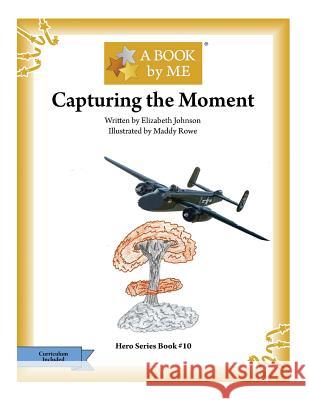Capturing the Moment » książka
Capturing the Moment
ISBN-13: 9781540882837 / Angielski / Miękka / 2016 / 26 str.
Reed Robertson was born on August 19, 1921 in Philadelphia, Pennsylvania, a city rich in American history. Reed's Scottish grandfather, Robert Reed Robertson, was the architect who set the famous statue of its founder, William Penn, on top of city hall. Before this 37-foot-high bronze statue was installed, the architect's daughters walked around the hat's brim while it was separate and standing on the ground. His father Herbert lost his job during the Great Depression. He moved his family and started two new businesses, but they failed too. After Herbert's business failures and the girls' illnesses, he became depressed. Things were never the same. When he graduated high school, Reed received a scholarship and went to Drexel Institute of Technology in Philadelphia. He was studying chemical engineering. He was in college when the Japanese attacked Pearl Harbor sending America into the war. In November 1942, Reed enlisted in the Army Air Corps. He was sent to Augustana College in Rock Island, Illinois as a part of a new special military program to groom future officers in leadership skills. One day he met a young woman named Audrey. They wrote to each other when he moved on for training in San Antonio, Texas. There Reed faced the choice of becoming a pilot, a navigator or a bombardier. He chose navigator. While he continued his training in New Mexico, his thoughts were often of Audrey. He went to Rock Island on his leave with an engagement ring asking Audrey to marry him. They were married on November 17, 1944. In January 1945, Reed was shipped to the South Pacific. A navigator was a job with a very high death rate. They used a parachute for a seat and sat behind the pilot. There was very little protection, limited equipment to do the job and tight quarters. On many occasions, this caused Reed to think, "I'm not going to make it." His unit did low altitude skip bombing and strafing. Sometimes, they were ordered to take photographs from the air. His unit belonged to the 345th Bomb Group, nicknamed the Air Apaches. Reed remembers hearing the woman named Tokyo Rose mocking them on the radio. She was an American-born daughter of Japanese immigrants, but spent the war years with relatives in Japan. Her propaganda radio program, "Zero Hour," was aimed at demoralizing American troops. She was eventually returned to the United States after the war and tried for treason. Several days after the August 6, 1945 atomic bombing of Hiroshima, Reed's plane crew received orders to fly over Hiroshima to take aerial photographs of the damage. Then, on September 2, 1945, they were ordered to fly over and take pictures of Japan's formal surrender aboard the U.S.S. Missouri, anchored in Tokyo Bay. Much later, after the surrender, when going from one location to another in Japan, Reed walked around Hiroshima near the train station and saw the damage up close. Reed came home and moved to the Chicago area where he took advantage of the GI Bill. He went to night school to complete his college education at the Illinois Institute of Technology while working full-time. They had a good life, which included a daughter, Cynthia, and eventually two grandchildren and two great-grandchildren. They lived and worked in Maine but moved back to Illinois in 1998 to be near their daughter and her husband in Galesburg. Audrey passed away in 2014. Reed continues to live in Galesburg.
Zawartość książki może nie spełniać oczekiwań – reklamacje nie obejmują treści, która mogła nie być redakcyjnie ani merytorycznie opracowana.











